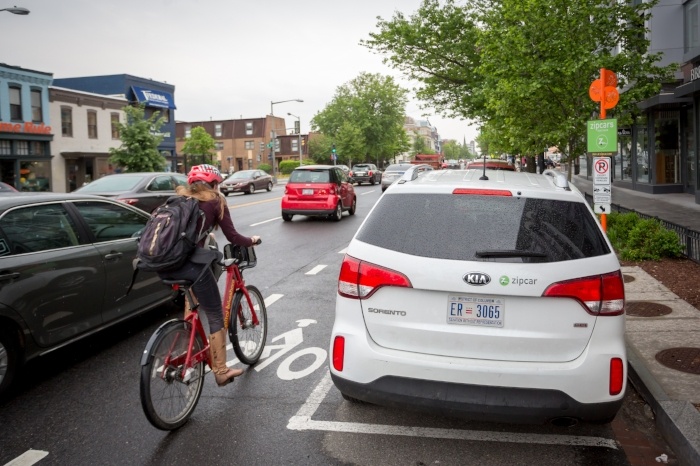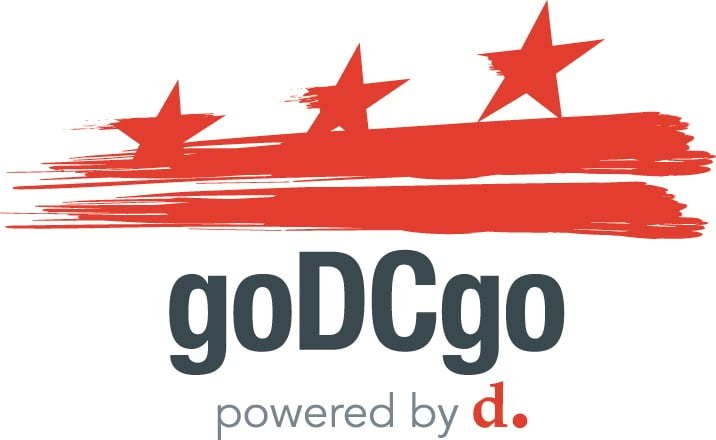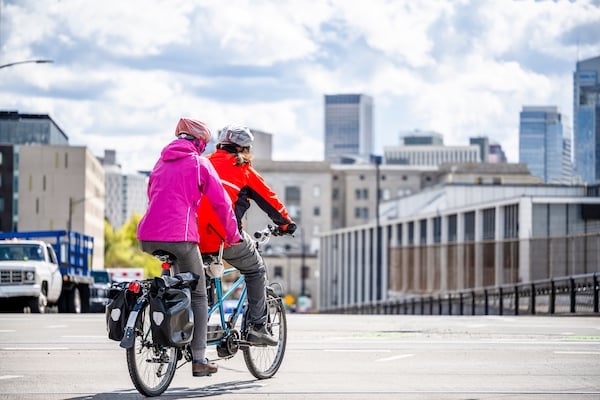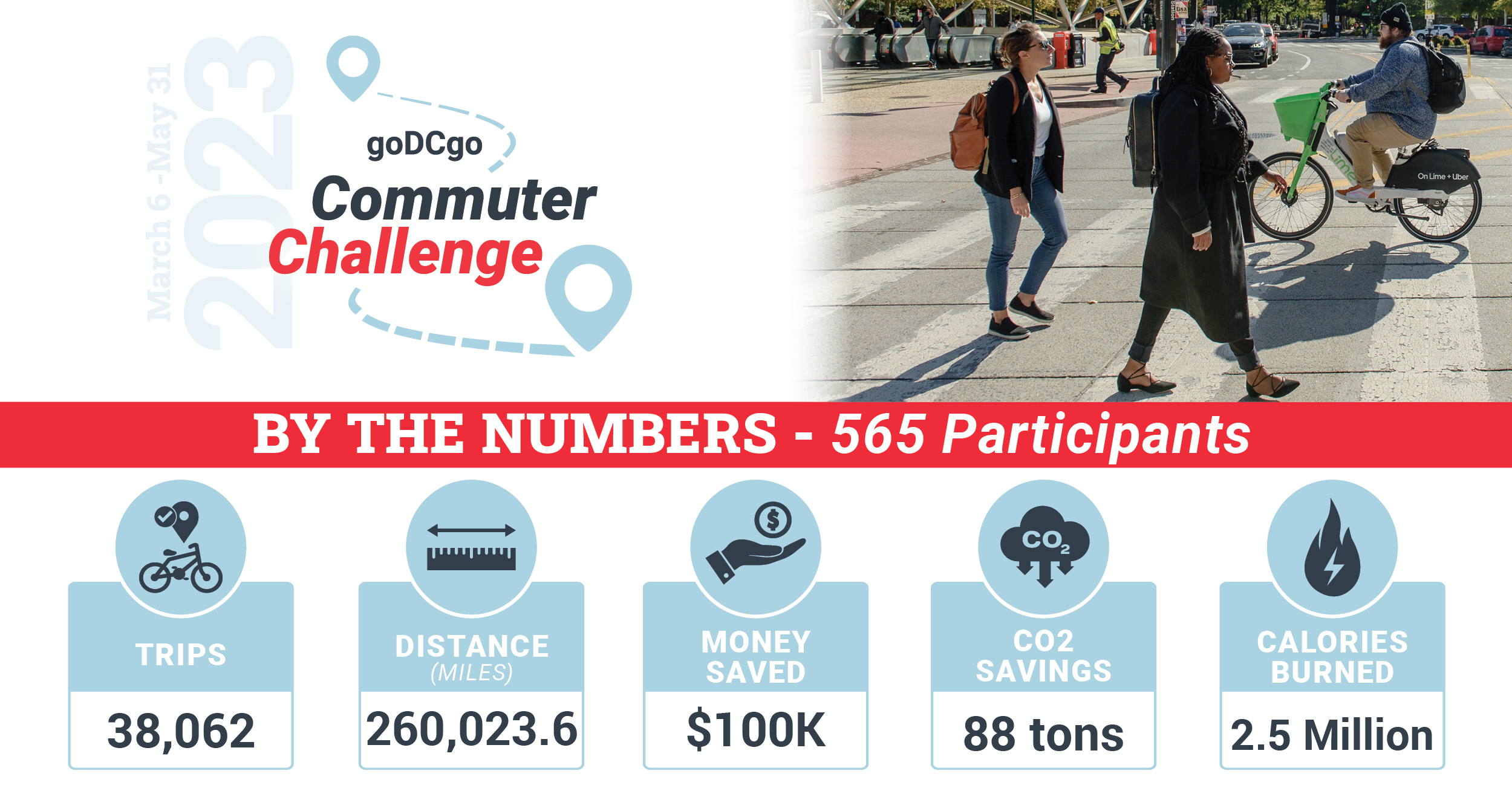Here at goDCgo, we take bicycle safety seriously, and we want you to do the same!
Luckily, the DC region has the Washington Area Bicycle Association (WABA) as a resource for all things bike – and they’re kind of the experts when it comes to bike safety. Over the past year, WABA has been bringing us monthly pointers about bike safety, which we've adopted as Capital Bikeshare's official Riding Tips. Here, we provide some additional detail and context for each riding tip to help you follow the rules of the road this Bike Month.
Ride in Single File
- Riding single file ensures that bicyclists do not obstruct the flow of traffic on single lane or narrow roads.
- By riding single file, multiple bicyclists use the same space on the road, enabling them to stay out of the door zone while remaining visible to drivers.
- When riding single file, be sure to communicate with riders in front of and behind you. Signal your turns and stops, and use verbal warnings such as “stopping” or “car approaching”.
- On trails, riding single file keeps pedestrians and other slow-moving trail users safe.
- While most drivers are perfectly courteous, it’s always possible that drivers may take offense to bicyclists’ actions, such as blocking a lane of travel. Riding single file can help minimize these frustrations.
Be Careful at Intersections
- When approaching an intersection, ride in the center of the rightmost lane that will take you the direction you want to go—right lane for turning right, left lane for turning left, etc.
- Check behind you, then use hand signals to indicate that you are changing lanes or turning.
- Make eye contact with drivers around you to ensure that they have noticed you—communication is key!
- When stopped at an intersection, do so in the center of the lane—either in front of or behind a car—to ensure that you are seen by the driver. Don’t wait off to the side, where they may not be looking.
- Drivers are often unable to estimate the speed of bikes and think they have enough time to make a turn. Keep an eye on drivers traveling in the opposite lane and turning left across your path.
Beware of Parked Car Doors – They can Open at Anytime!
- The 3-5 feet to the left of parked cars is called the “Door Zone.” Vehicle doors vary in length, and you should ride outside of the door zone as much as you can.
- Riding outside of the “Door Zone” has the added benefit of making you more visible to drivers in front of and behind you.
- Be aware of passenger vehicles (taxis and buses) and always pass on the left to avoid conflicts with drivers entering or exiting the roadway.
- Use a bell (or your voice) to communicate with drivers and passengers who are opening their doors.
Always Wear a Helmet
- Every helmet sold in the US meets the same safety standards. Spending $200 might get you a cooler helmet, but it won’t get you one that keeps your head safer.
- Helmet laws vary by location: people under 16 must wear helmets in DC and MD, under 14 in VA.
- Helmets are good for one crash only! Additionally, they need to be replaced every 4-6 years whether you have been involved in a crash or not.
- On a bike, you can avoid many crashes by paying attention and riding visibly & predictably. But you can’t control or avoid everything, and when a crash happens, a bike helmet is your last line of defense. Don’t ride without it!
- A helmet won’t help if it doesn’t fit you correctly. Take these steps to put your helmet on right:
- Place the helmet level on your head, not too far forward or back. The brim should be about two fingers’ width above your eyebrows.
- The side straps should come to a V just below your earlobes.
- The chinstrap should be snug under your chin. When you open your mouth wide, you should feel the helmet tug down on the top of your head.
- The helmet shouldn’t wobble or shake when you move your head.
Always Use Lights at Night
- DC, Maryland and Virginia laws require white front lights on all bikes. A rear red light and/or red reflector is also required.
- It never hurts to add more lights to your bike or to your bag/helmet!
- If you are riding on an off-street trail (such as the Mount Vernon Trail) without overhead lighting, you may need to invest in a headlamp or other powerful light to illuminate the trail.
- You can supplement your lights with brightly colored clothing and retro-reflective material on your helmet, gloves, legbands, and jacket.
- Lights can keep you visible even during the day, and they’re especially helpful in the dawn/dusk, as well as in the rain.
- Remember to pack extra batteries for longer rides! (Also, batteries drain faster in the cold.)
Ride in a Straight Line
- When you ride in a straight line, drivers (and other cyclists) expect that you will continue to do so. Being predictable keeps you safer.
- Ride outside of the door zone and stay there. No swerving means no worrying about car doors.
- Resist the temptation to move to the right when there are no parked cars. Sure, it can be a relief to get out of traffic, but you are making yourself harder to see and predict.
- To change lanes or make turns, remember your hand signals. Signal early and often. Back up your signals with eye contact and make your intentions clear.
- If you find yourself swerving when looking over your shoulder, practice your technique in an empty parking lot.
Obey All Regulatory Signs and Traffic Lights
- As the driver of a vehicle, you are required to stop at all stop signs and red traffic signals. At stop signs, be sure to yield to vehicles that have reached the intersection before you.
- When stopping at an intersection, stop before the crosswalk. Be respectful and stay out of the way of pedestrians crossing in front of you.
- Bikes are not allowed to ride the wrong way down one-way streets, unless specifically directed to by signs (DC has one of these at northbound New Hampshire and T Streets, NW).
- If riding on the sidewalk (it is legal to do so outside of the central business district), follow the pedestrian signals. Also, slow down when crossing intersections in the crosswalk, as turning drivers are not expecting fast moving sidewalk traffic and may not see you.
Use Hand Signals
- For turns, simply hold out your arm in the direction you want to turn. You can also signal a right turn by holding your left arm out and bent up at the elbow.
- Remember, bikes don’t have brake lights, so signal your stops by holding either arm out and bent down at the elbow. This is especially helpful on off-street trails.
- Add motion to your signals! Movement attracts attention, so flex at the wrist or elbow as you make your hand signal.
- Earlier is better, so try to signal your turns half a block or 500 feet before an intersection, whichever is further away.
- For lane-changes, point at the lane you are moving into, so drivers don’t think you are turning off the roadway completely.
- Don’t stop there: make eye contact, wave, smile and use other body language to communicate your intentions to drivers. If they can predict your actions, you stay safer.
Never Ride Against Traffic
- When you ride against traffic, you increase the speed of a potential crash, and faster crashes are deadlier crashes. Traveling in the same direction as traffic reduces the speed of a potential crash.
- When drivers turn onto a one-way street, they may only look for traffic coming from one direction. Riding against traffic means turning motorists may not even look for you.
- Road signs and signals are oriented towards traffic traveling in the correct direction. If you ride against traffic, you can’t see the signs and signals.
- Riding against traffic is against the law. Bicyclists are required to obey the same laws as motorists.
Be careful out there and have FUN! Happy Bike Month!








